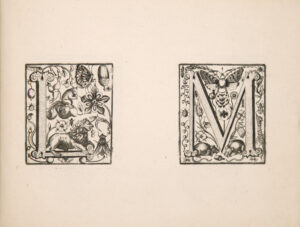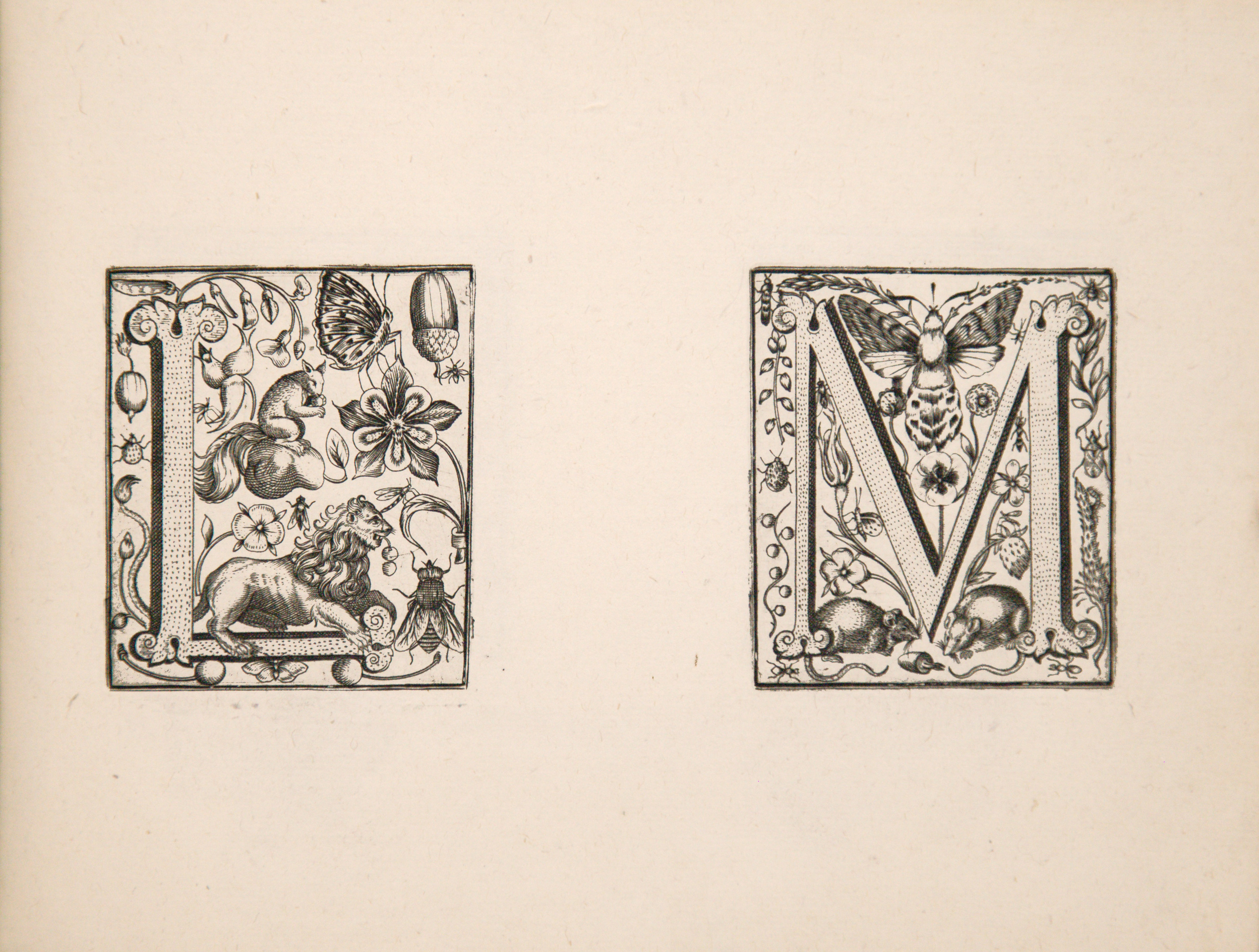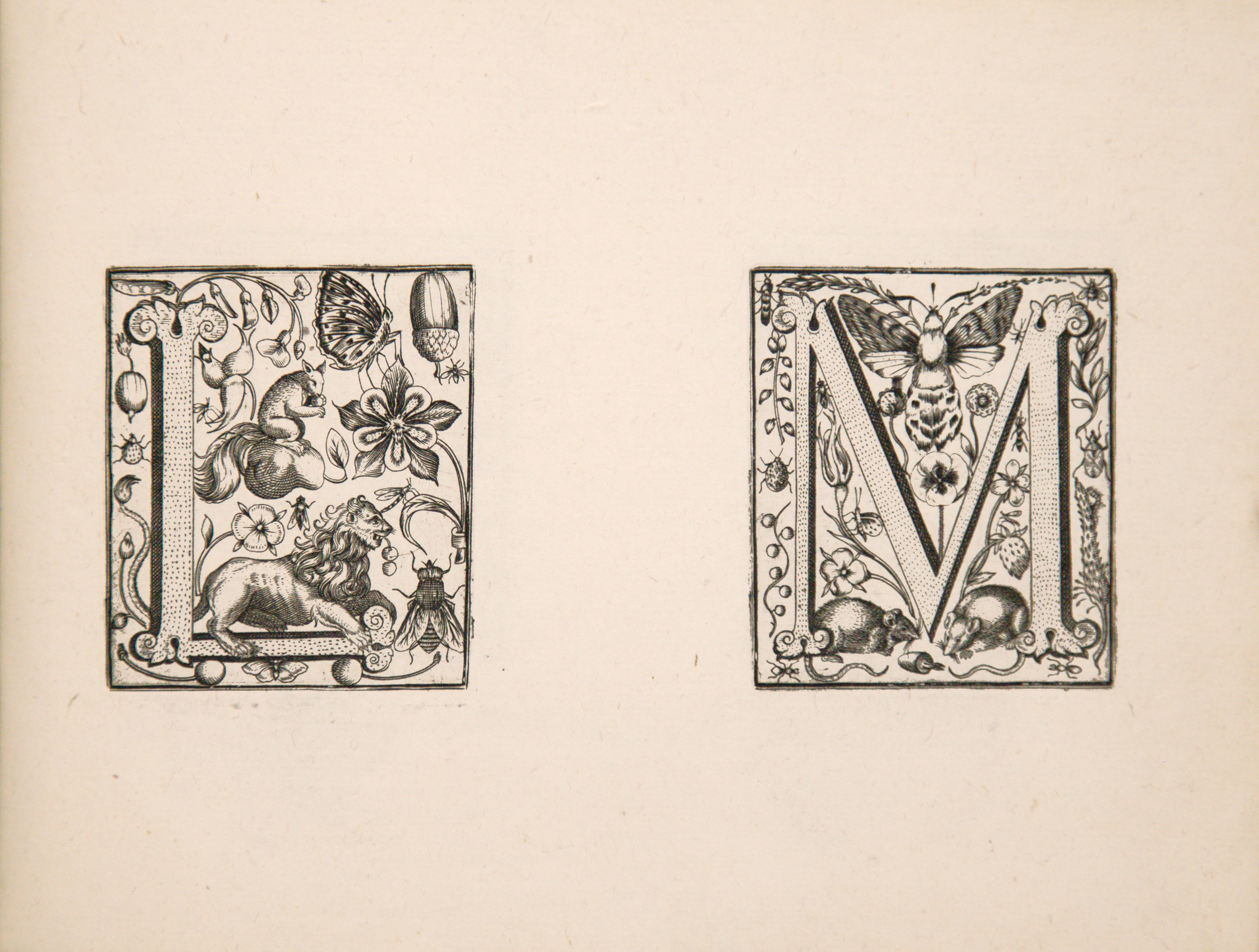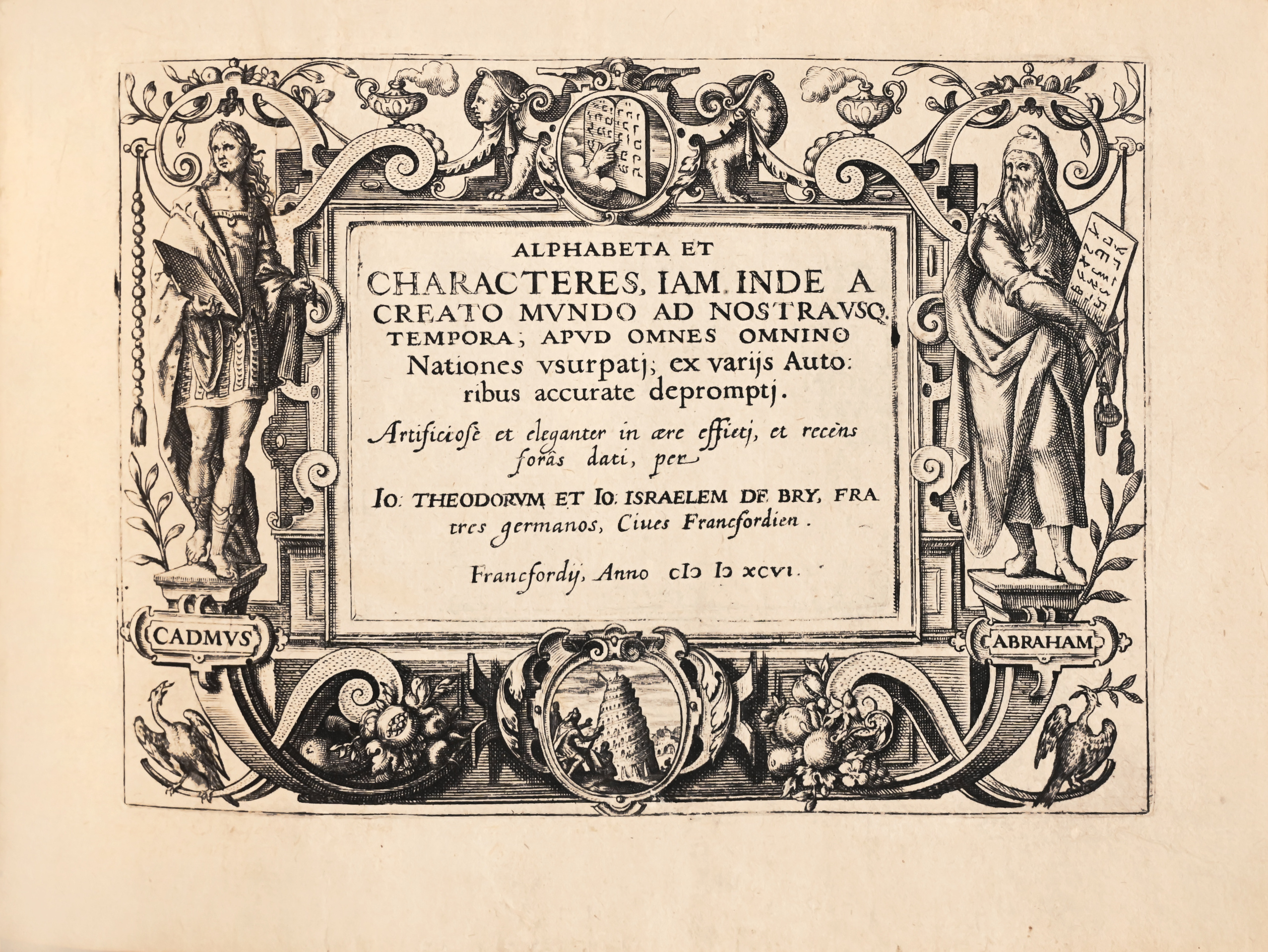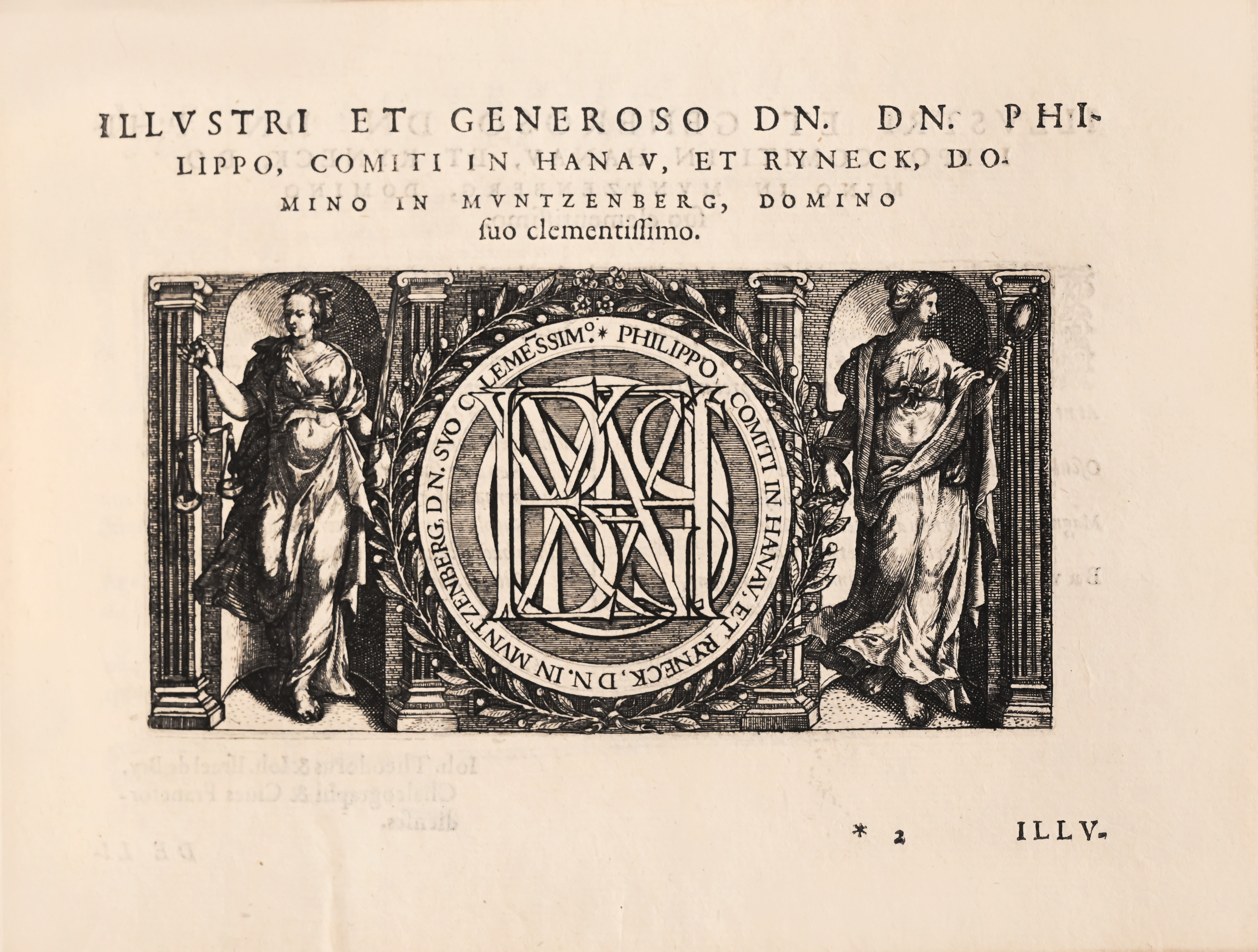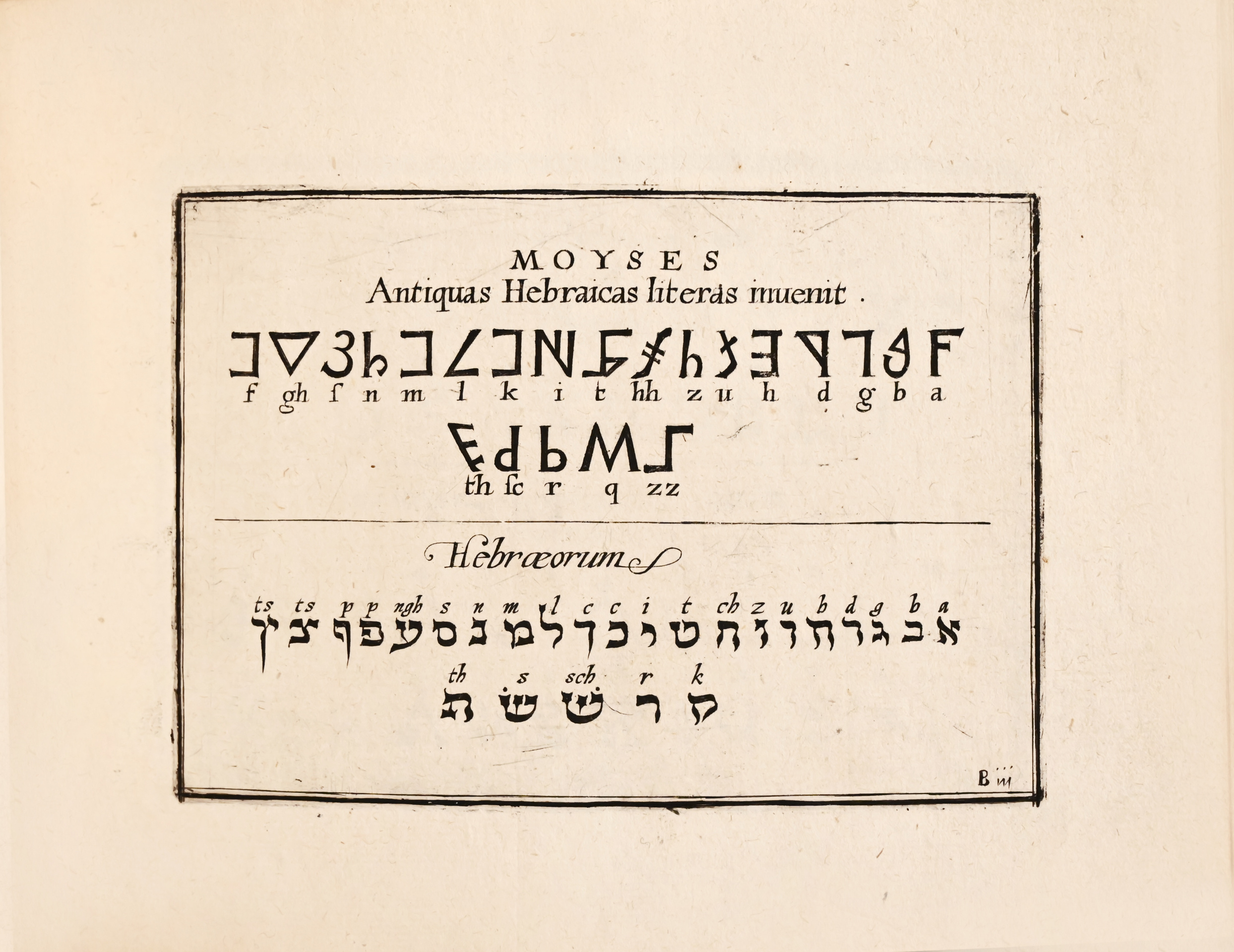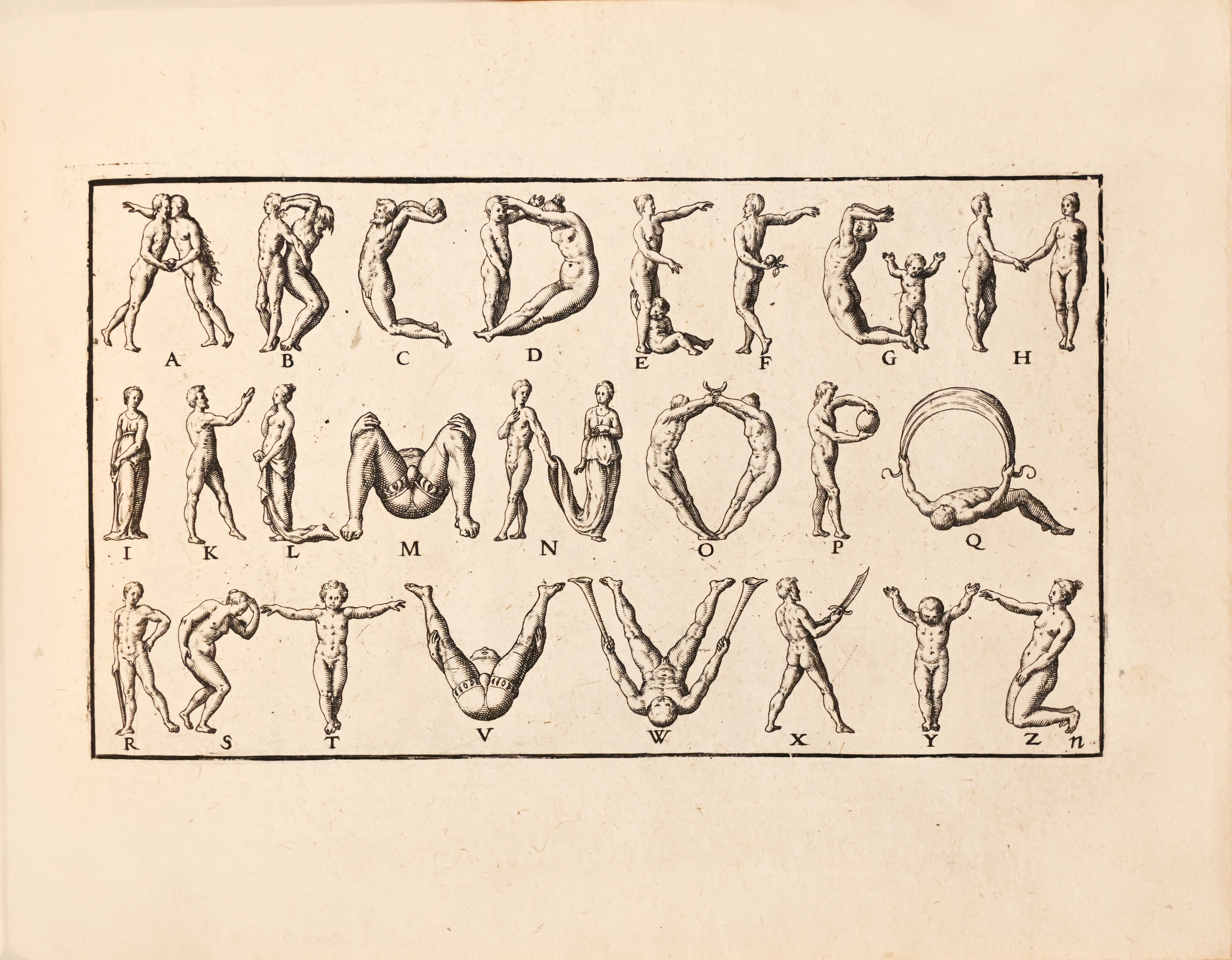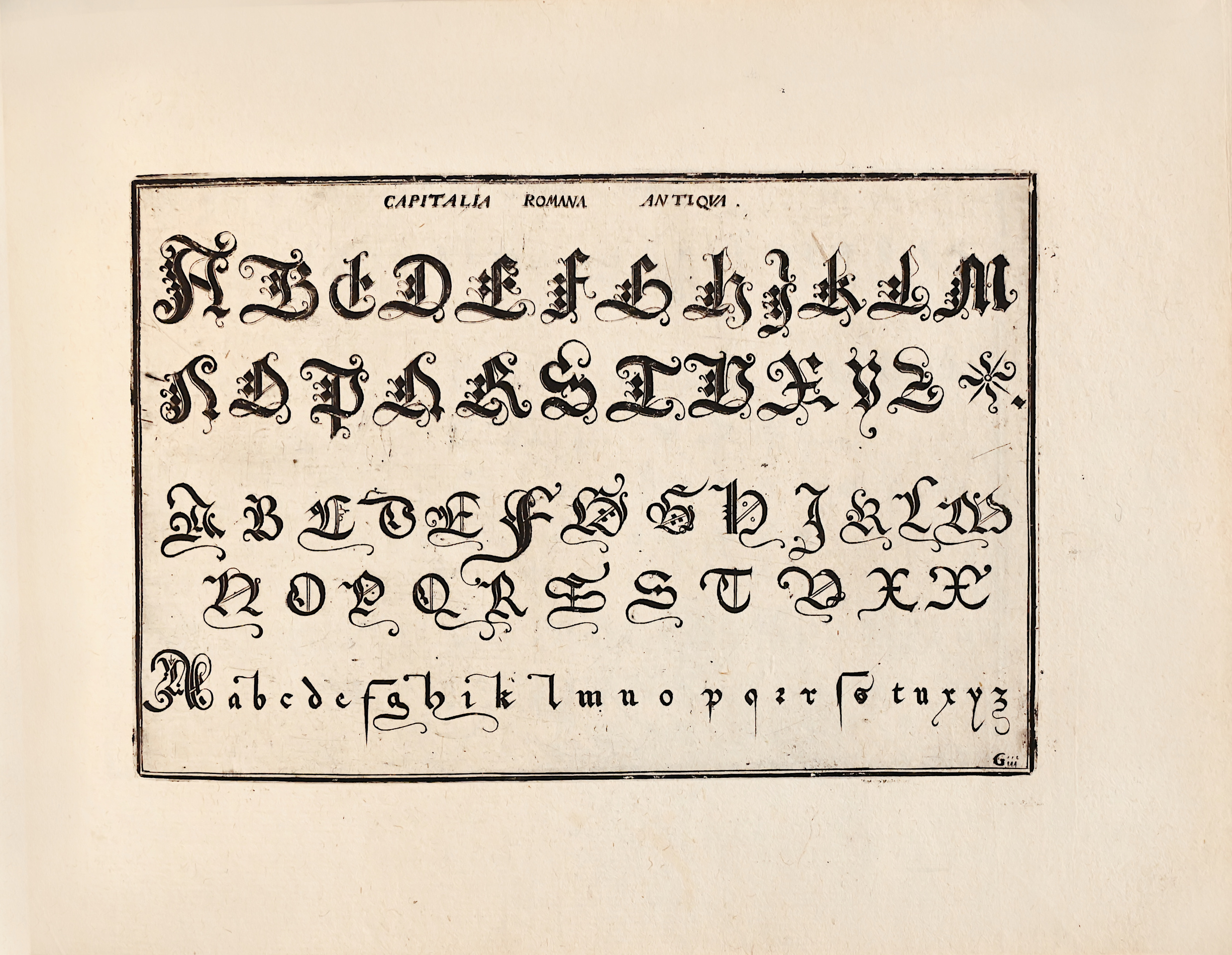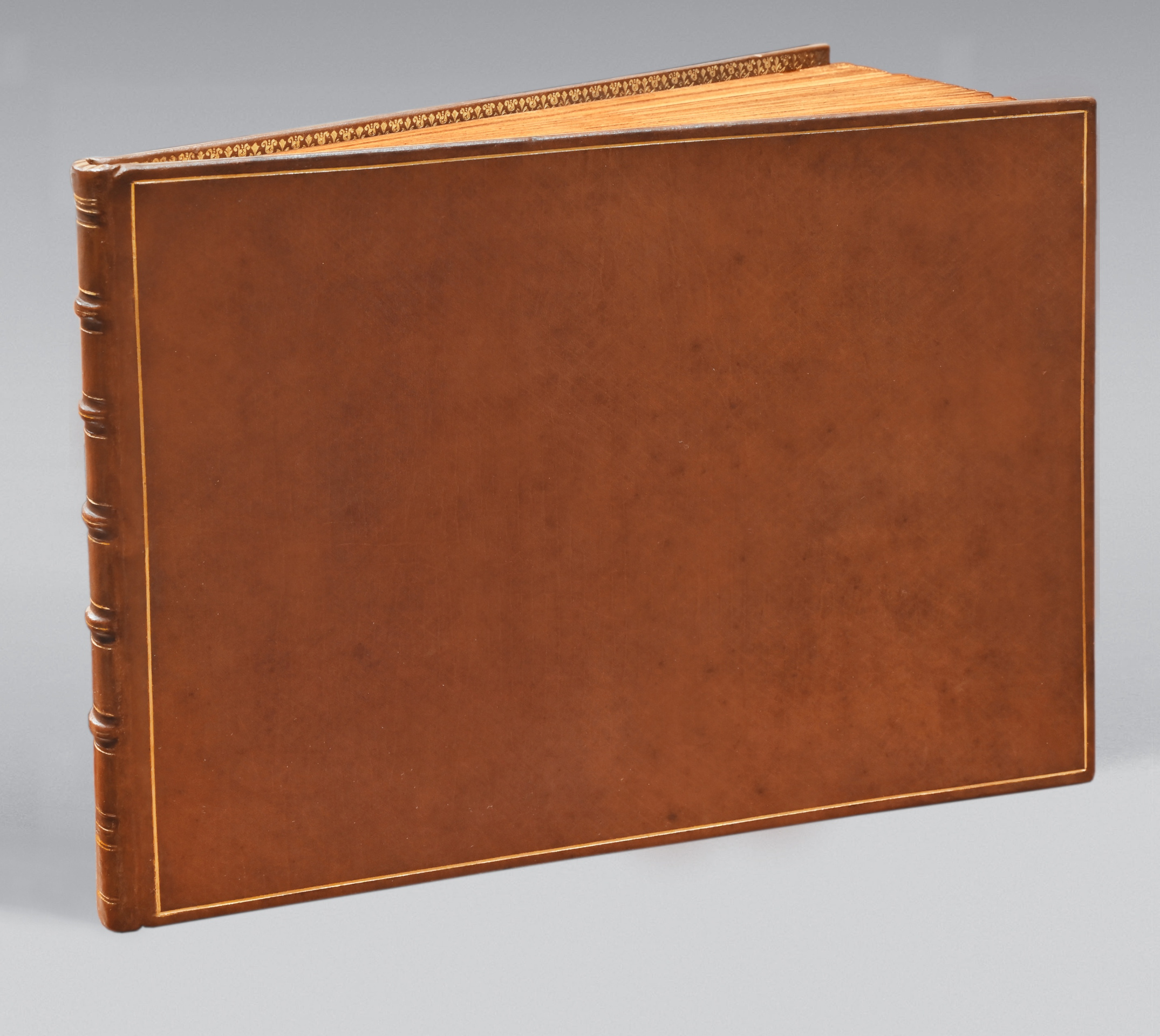Francfordij… 1596.
Oblong 4to of (6) ll., 62 plates on 51 ll. (leaf K2 showing letters E and F is missing).
Light-brown Russian calf, gilt fillet around the covers, spine ribbed, hinges fragile, gilt edges. Binding signed by Bruyère, towards 1840.
146 x 199 mm.
First original edition of this collection of the de Bry Brothers which claims to trace all the alphabets used by the various peoples of the world. The Latin alphabets were traced from the models of Corneille Agrippa and Baptiste Palatin.
Hollstein Dutch and Flemish IV.37, n°119-169, Bonacini 290 ; cf. Becker : Hofer Collection 59 (citing German-language edition) ; Berlin 5283 ; Guilmard p. 369 ; Brunet I, 1309 ; Graesse VIII, 124.
First edition, published simultaneously with a German-language issue (« Alphabeten , und aller art Characteren… »).
The alphabet plates include representations of Chaldaen, Syriac, Hebrew, Coptic, Arabic, Samaritan, Greek, Illyrian, Croatian, Armenian, and Roman, among others, many of these in several different varieties, as well as national varieties of lettering styles – German, Flemish, French, and other – also demonstrating upper and lower cases and styles of script.
Following these are 12 plates with an alphabet of 24 elaborate Mannerist initial letters by the de Bry brothers, exquisitely ornamented with lions, horses, unicorns, dogs, monkeys, cats, peacocks, turkeys, pelicans, owls, butterflies, beetles, and vines.
The final three plates (of four published in the concluding section) include six handsome monogram devices for the brothers themselves and others, and two quatrains of verse in rebus form.
This copy includes, however, the beautiful and very elaborate dedication engraving, which is not always present- a complex wreathed monogram for Count Philip Louis II of Hanau-Münzenberg, set between elegant figures of Justice and Truth, who stride forward from columned niches bearing scales and a mirror.
In the description of his incomplete copy, Peter A. Wick added: « Like all other copies we have seen described, this volume does not include Plate A, and it would appear that it was never present, as Becker speculates with reference to the German issue of the work. »
The present copy contains plate A1 that reproduces the dedication engraving.
« This antiquarian text, Alphabeta et characteres, first published in 1596 and later published in English in 1628 as Caracters and Diversitie of Letteres Used by Divers Nations in the World, the second alphabet book produced by the de Bry workshop in the 1590s, is comprised mostly of plates reproducing alphabets ancient and modern. The de Brys’ fanciful alphabet, in which letters are composed entirely of bodies, is therefore something of an exception in the larger historicizing program of the book, but it does offer a lesson in embodiement that applies to the book as a whole. The alphabet begins with Adam and Eve who, in their original sin, ‘fall’ into each other to become the letter A. This corporeal letter, linked to the Fall as surely as the A of the ‘Nova alphati’, once again suggests that in a fallen world it is only by means of the letter that we can embody our scriptural origins. Yet this is also a book full of alphabets in which time makes fallen bodies of letters. The corporeal letter cannot help but play a paradoxical role in a book whose historicizing purpose is to embody the origins of that which embodies our origins. It would be easy to explain away this problem by treating the fanciful A composed of Adam and Eve as a witty gloss on the simple letter A that is given, a priori, just below it; yet this simple A, printed in Roman capital, itself turns out to be a gloss on something prior to it. The plate from the ‘Alphabeta et characters’ illustrating the historicized Roman alphabet proves that this letter exists in time and must therefore be seen as a descendant of, for example, the curious A’s of two ancient Egyptian alphabets represented in a separate plate, letters that are themselves descendants of some prior letter. At some point, if we are to avoid lapsing into this infinite regression in which there will always be one more step to an original writing, a separation must be forced between the sacred truths borne by the letter and the letter as historical artifact.
Perhaps once could argue, with Juliet Fleming, that the form this separation takes in response to the Renaissance tattoo is one of acknowledgment and disavowal. We have seen the ideological work of disavowal, in which the potential sameness of tattoo and letter is renounced through an exclusion of the tattoo from the realm of writing.
Such a disavowal is implicit in the introductory remarks to ‘Caracters and Diversitie of Letters’: ‘Among Men, some are accounted Ciuill, and more both Sociable and Religious, by the Vse of ‘letters’ and Writing, which others wanting are esteemed Brutish, Sauage, Barbarous. But the tattoo, precisely because it stands as a site of disavowal, is the fetish that acknowledges the letter’s fallen materiality. In the case of de Bry’s engraving, that acknowledgment becomes particularly apparent when we consider alongside the Roman capitals of the ‘Alphabeta et characters’, de Bry’s Roman capitals that index the Algonquian tattoos. Although de Bry’s historicized letters may not properly be ‘marks rased on their backs’, one could certainly see them in terms of inscriptions chiseled into stone, or even as marks ‘rased’ on copper plates. And as physical marks, the letters of the Roman alphabet are not less bound to matter and to a worldly temporality than tattoos. So long as we choose to see de Bry’s letters (and again I suggest we should see hem as we see the tattoos’, then we must acknowledge a fundamental similarity between letters and tattoos : both are marks that originate within time, in a material act of inscription. » (Savage Marks).
This outstanding collection of alphabets starts with a series of Eastern old and new alphabets (Chaldean, Syriac, Hebraic…) followed with antique, gothic, Latin, Italian, Spanish letters… Then comes a superb ornamentalist alphabet of Flemish inspiration decorated with flowers, birds, insects, quadrupeds. A very modern plate shows a humanoid alphabet like the one Daumier will use again several centuries later. The volume ends with a leaf with numbers and 2 leaves with rebus.
This very rare volume is well described only by the Berlin Katalog.
Brunet, himself quoted by Graesse and then by Bonacini, wrongly described this work indicating 51 leaves only based on a copy (Langlès auction). He is also wrong when he mentions that this is a second edition of the “Nova Alfati” by the de Bry Brothers, a completely different work and that, even though rare, is much more known that this one.
Of this work, truly exceedingly rare, no copy has appeared at auction since numerous decades and to our knowledge only 2 copies, both incomplete, have been presented in bookdealers catalogues: the first one in the 1970’s in the catalogue “Alphabets bestiaries…” of the bookshop Cécile Eluard, in which the dedication leaf was missing, and the second one, really incomplete, in the catalogue A. Jammes “Belles écritures” where it was described as “extremely rare”.
One of the last copies to appear on the market was the one of Peter A. Wick – Ars Libri limited, December 2010, described like this: « This copy lacks one plate in the final series, a fine acrobatic alphabet, several leaves newly mounted on stubs, lower right corner of final plate renewed in blank margin; title with expertly mended clean tear and one small abrasion at platemark; generally a fine, clean copy. » was sold for 25 000 $ ten years ago.
Fine copy – a small restoration in the margin of the last 2 plates – covered with a Russian leather binding signed by Bruyère, a book binder from Lyons who worked around 1840-1860, coming from the famous collection A. Brölemann.
